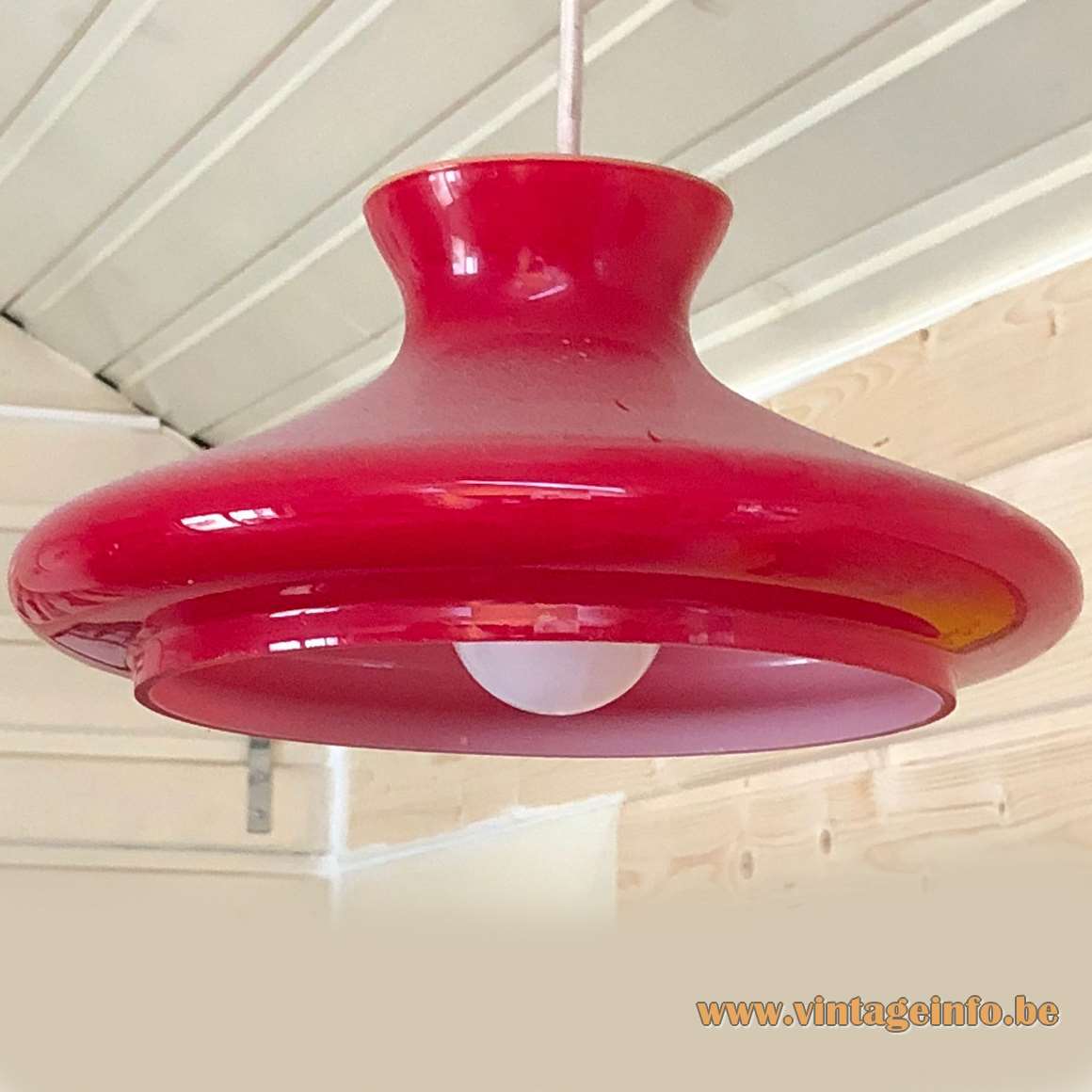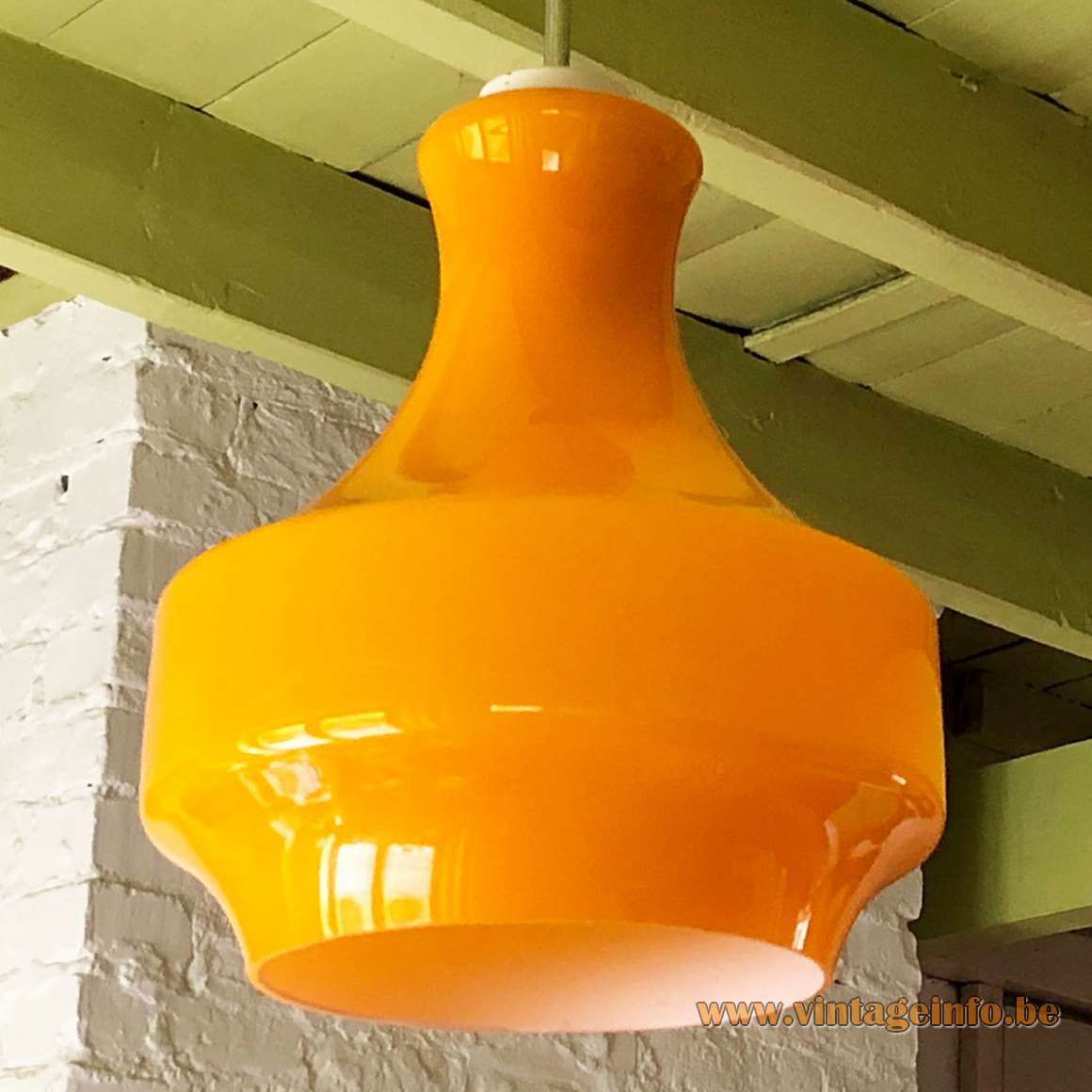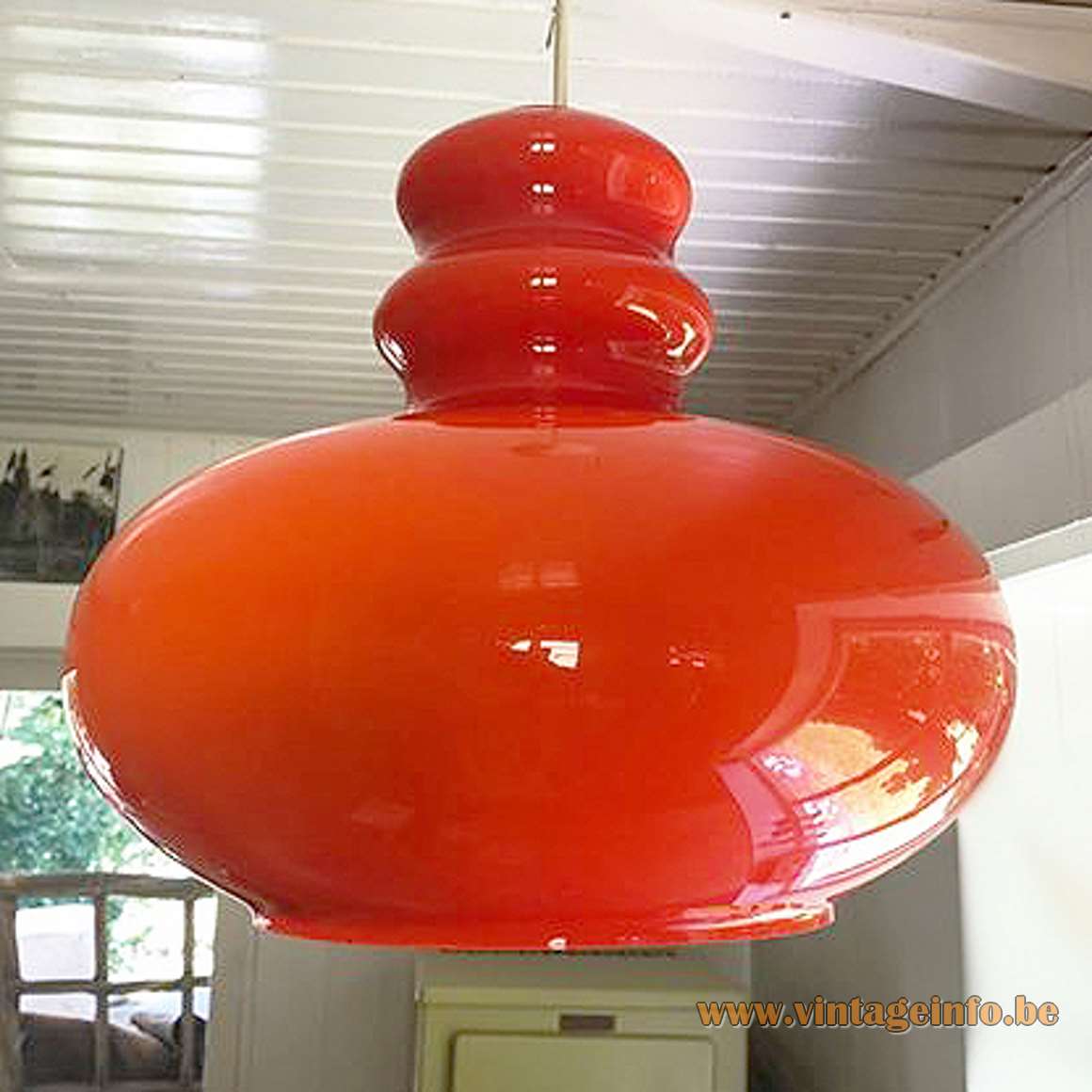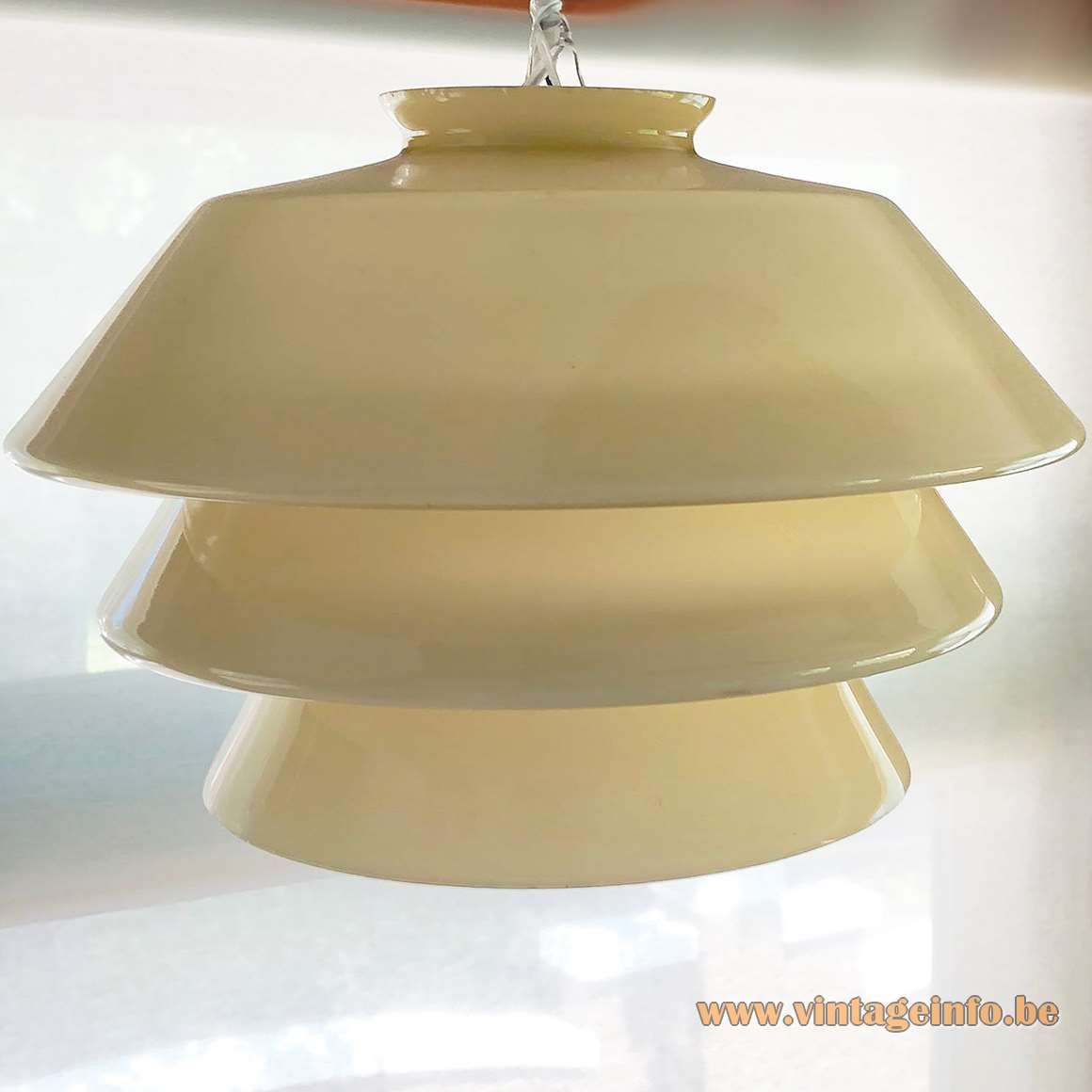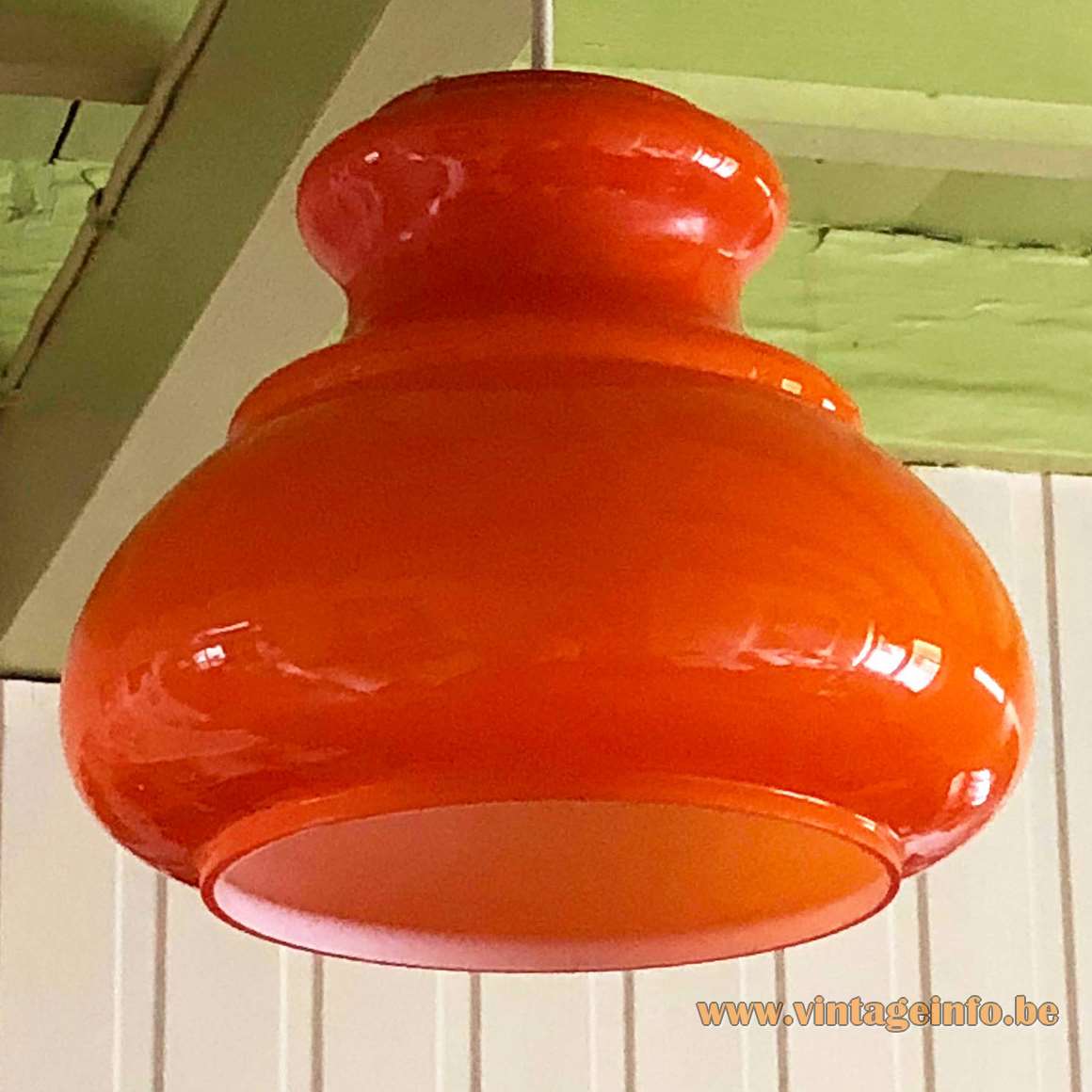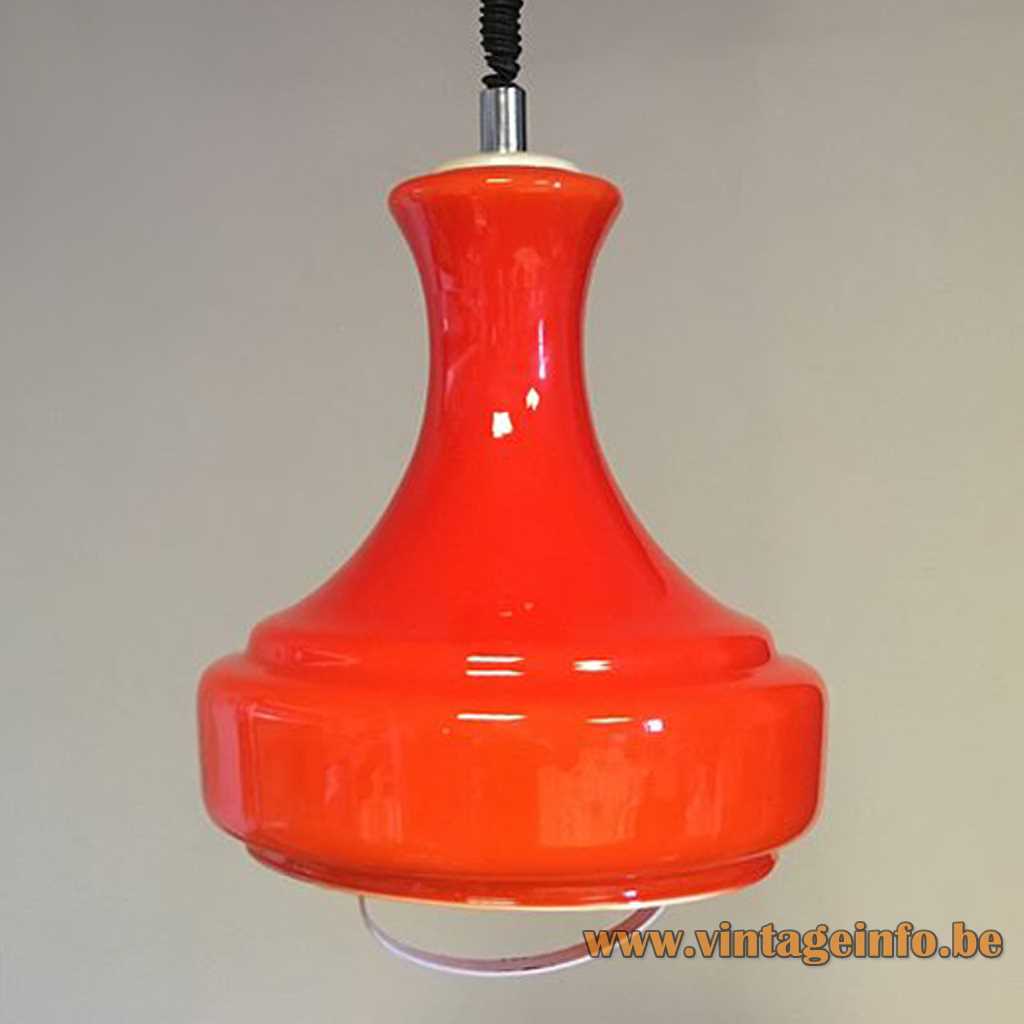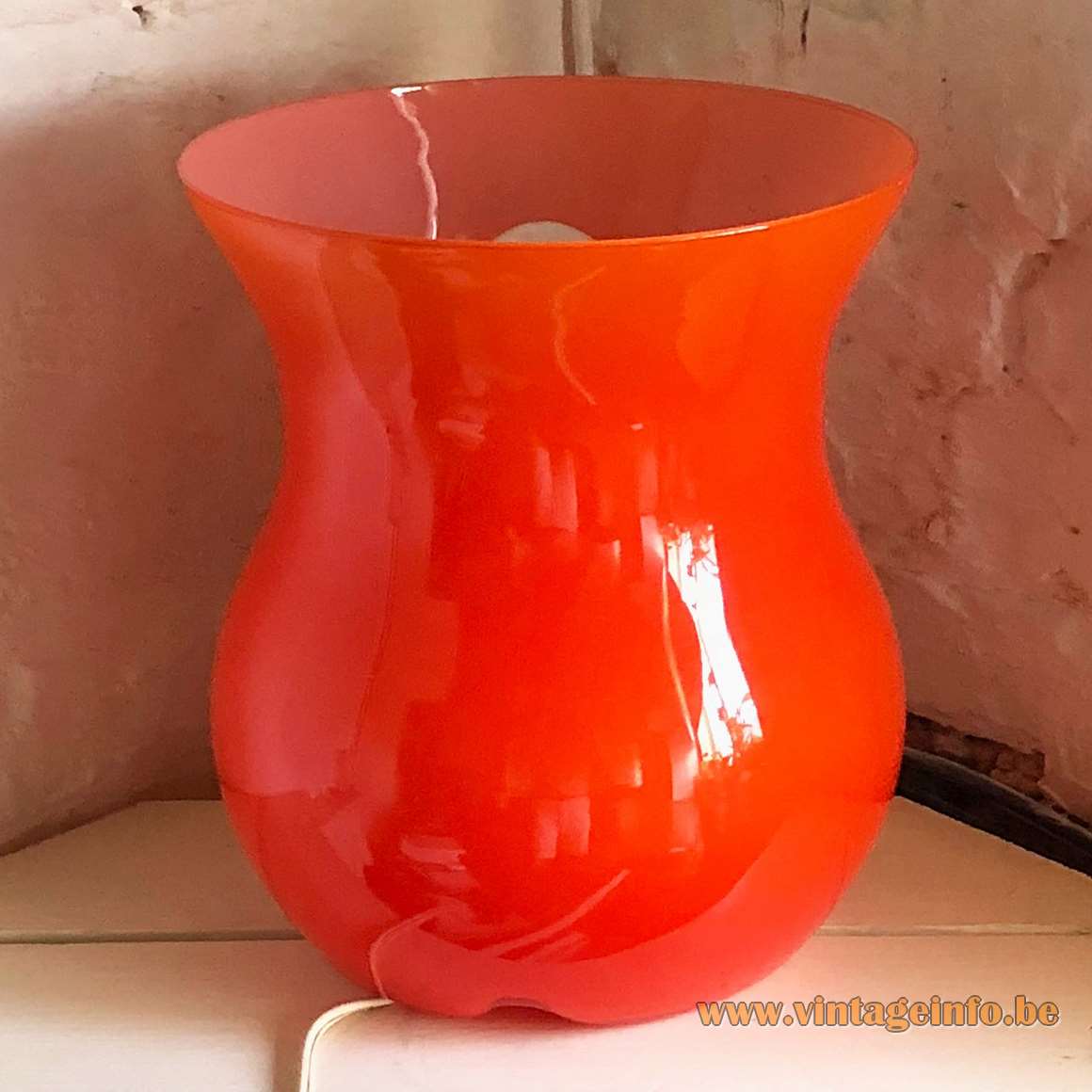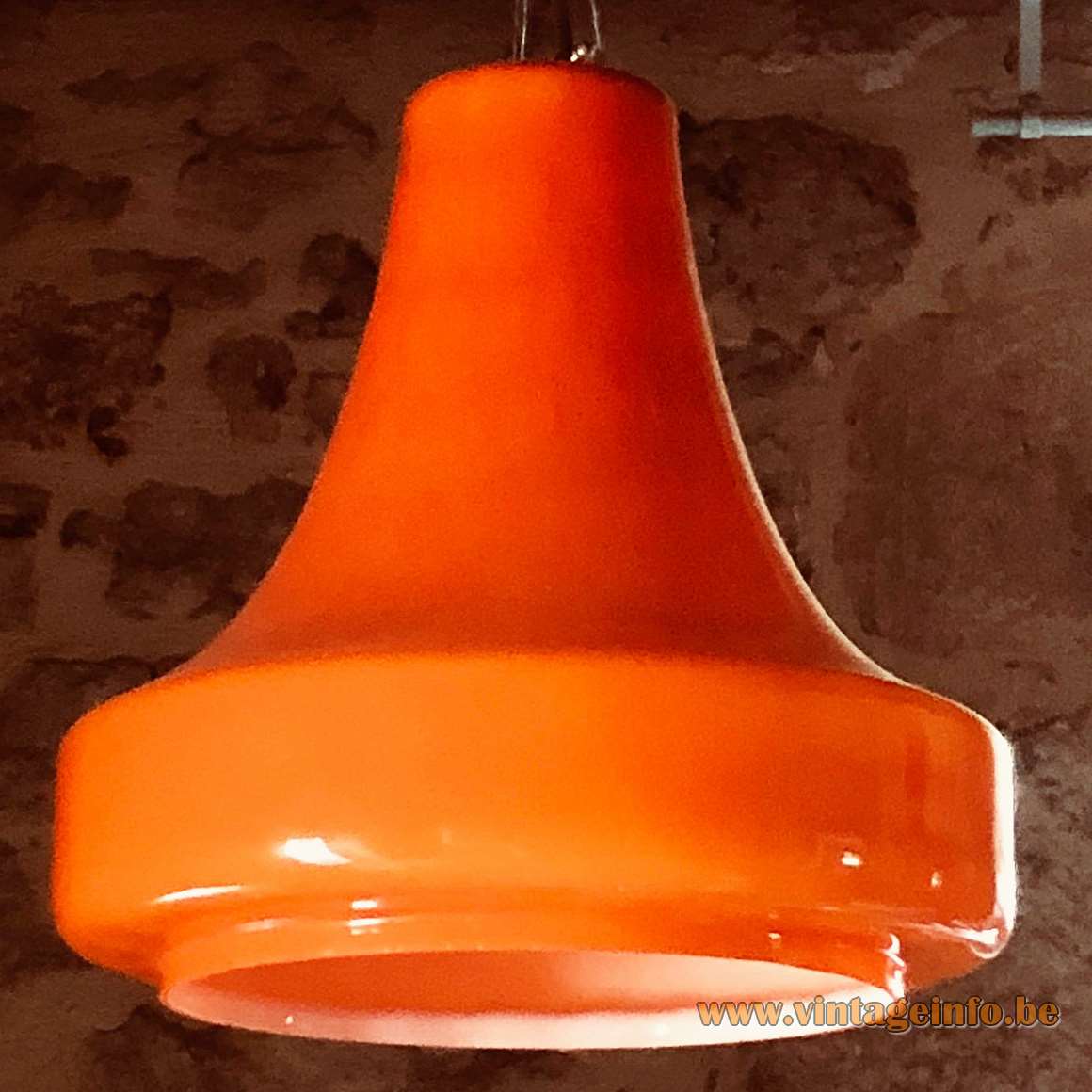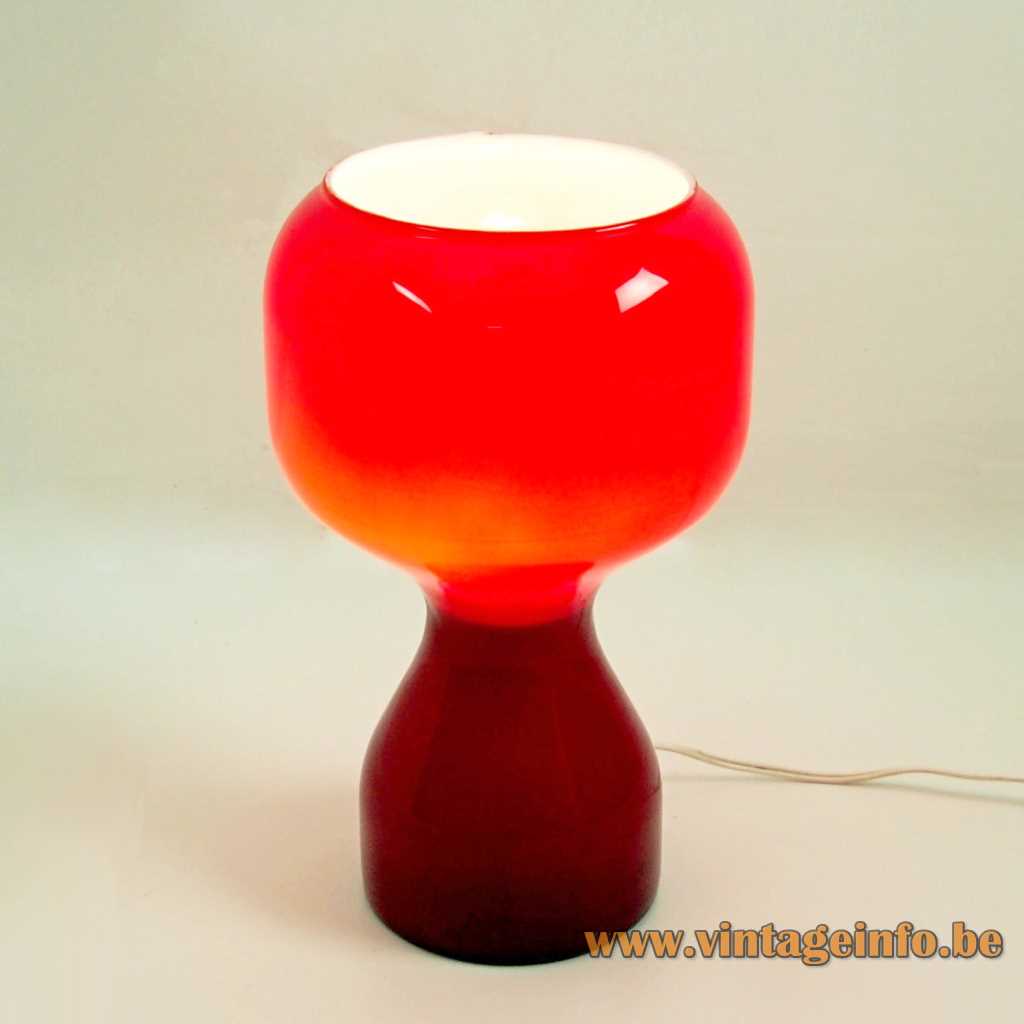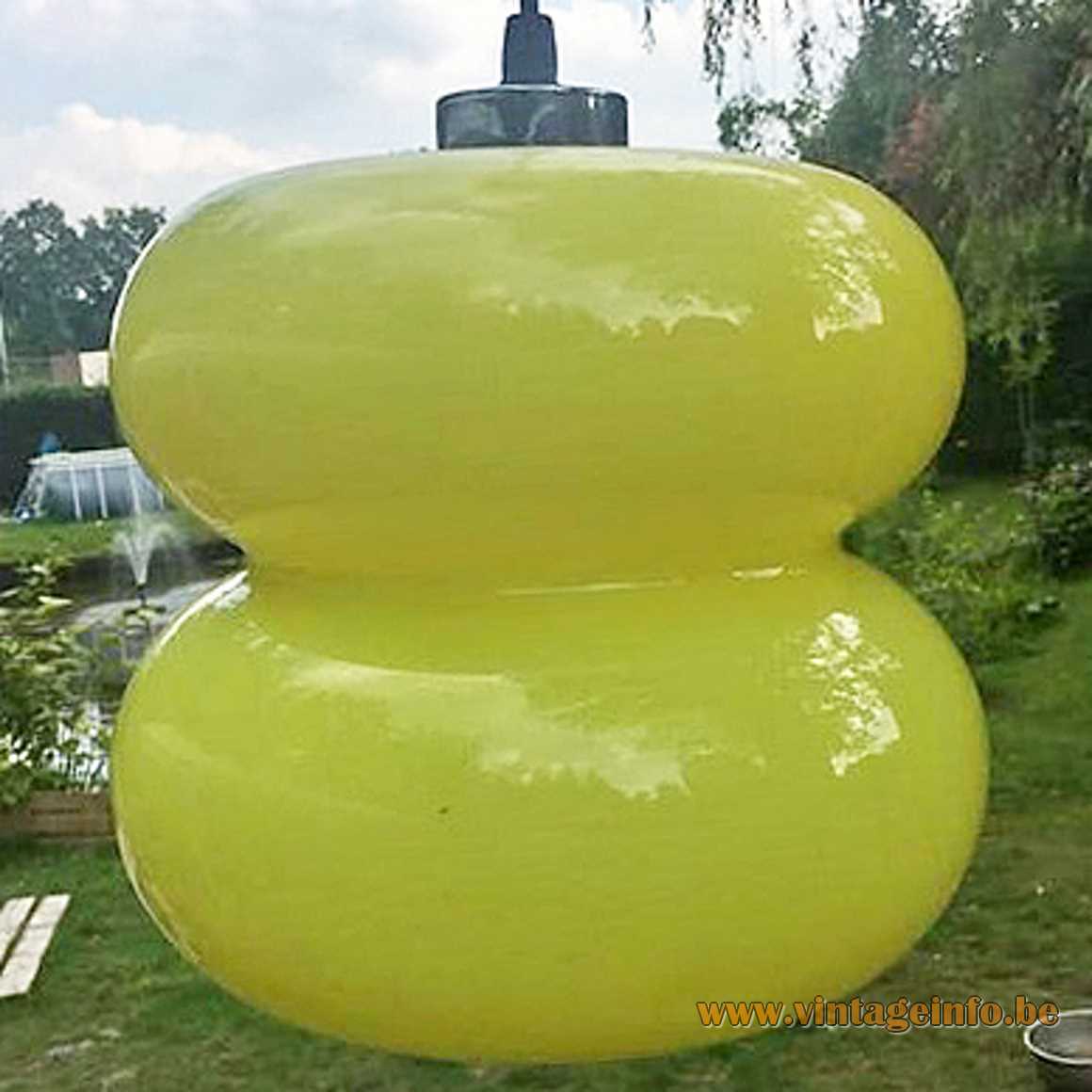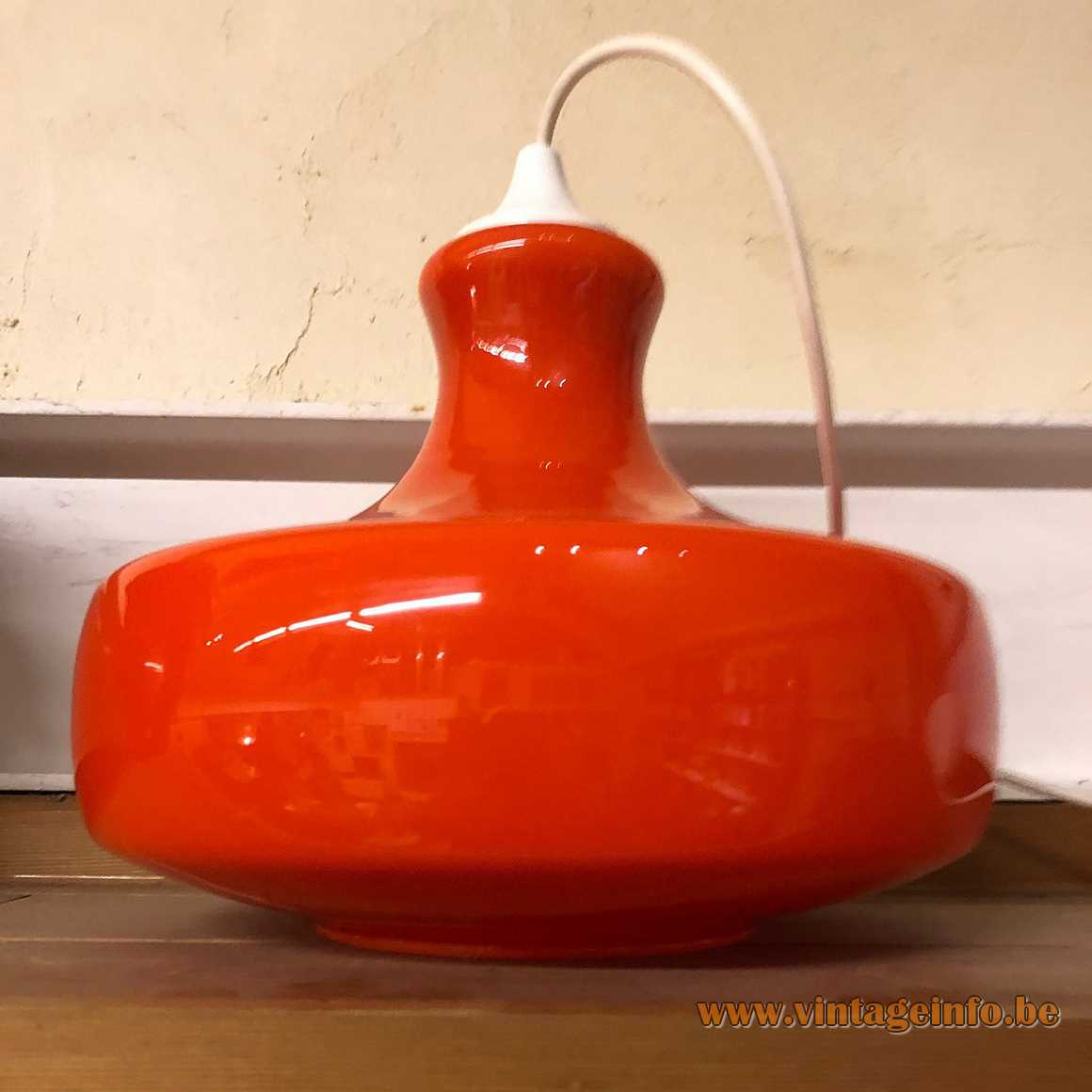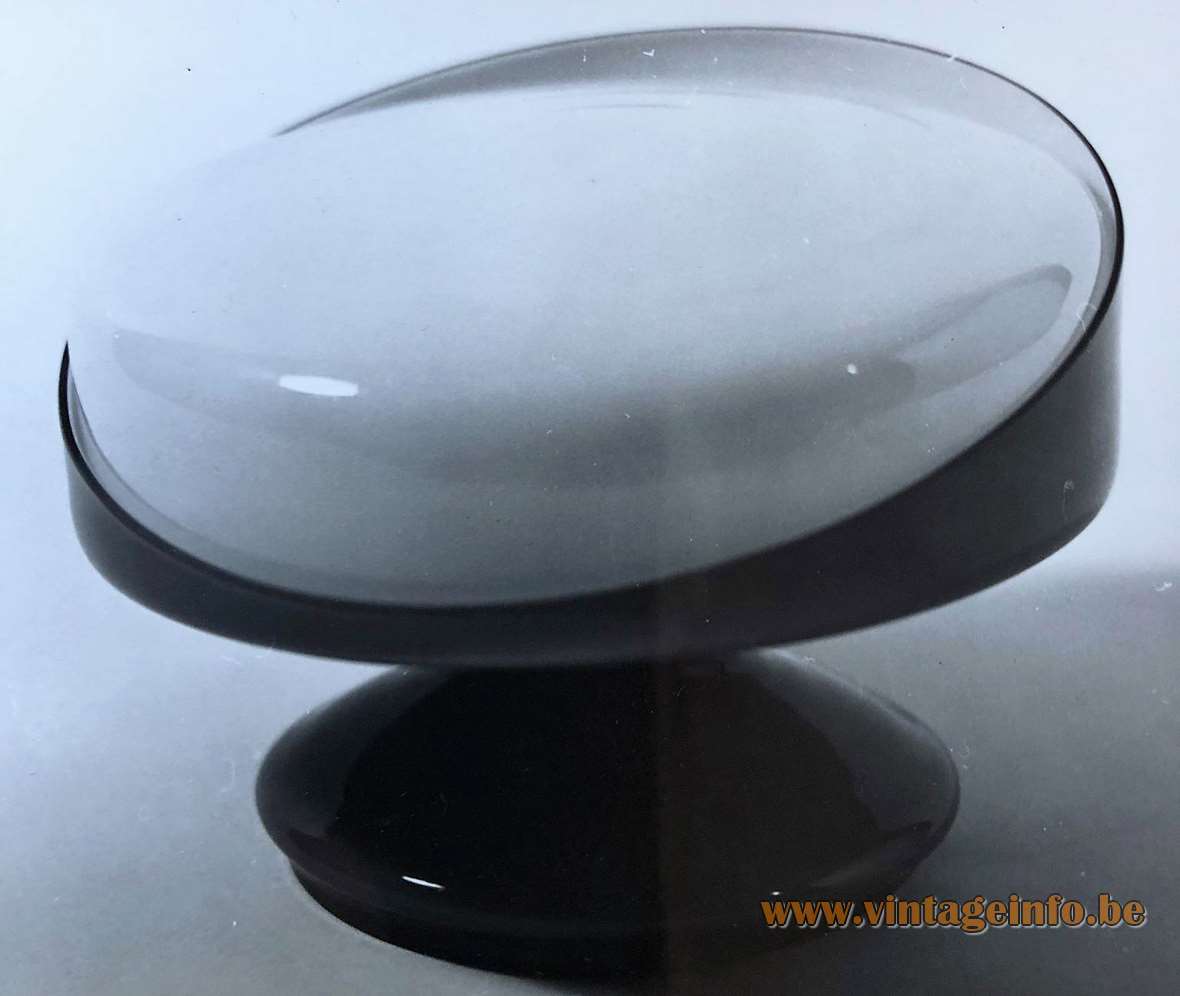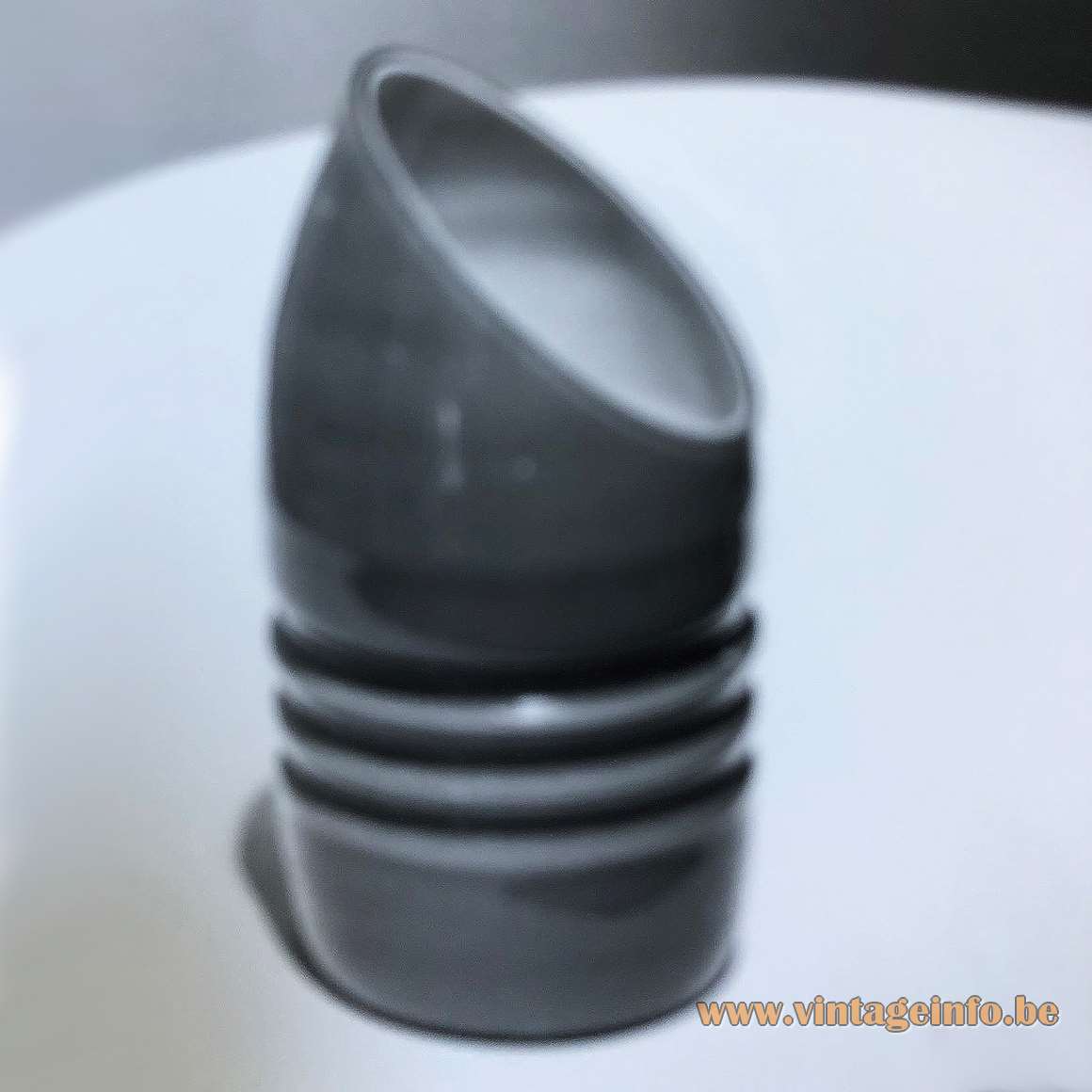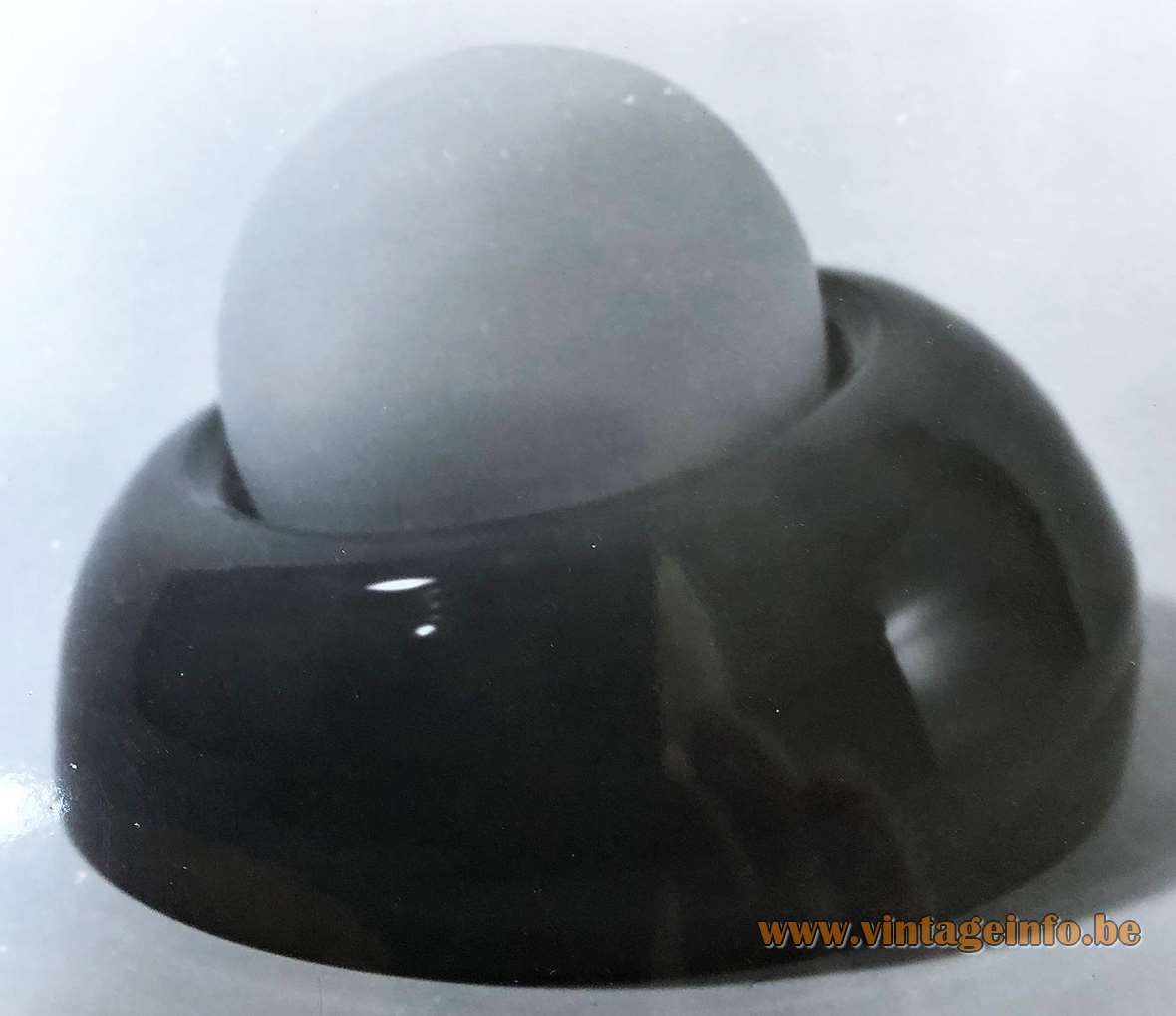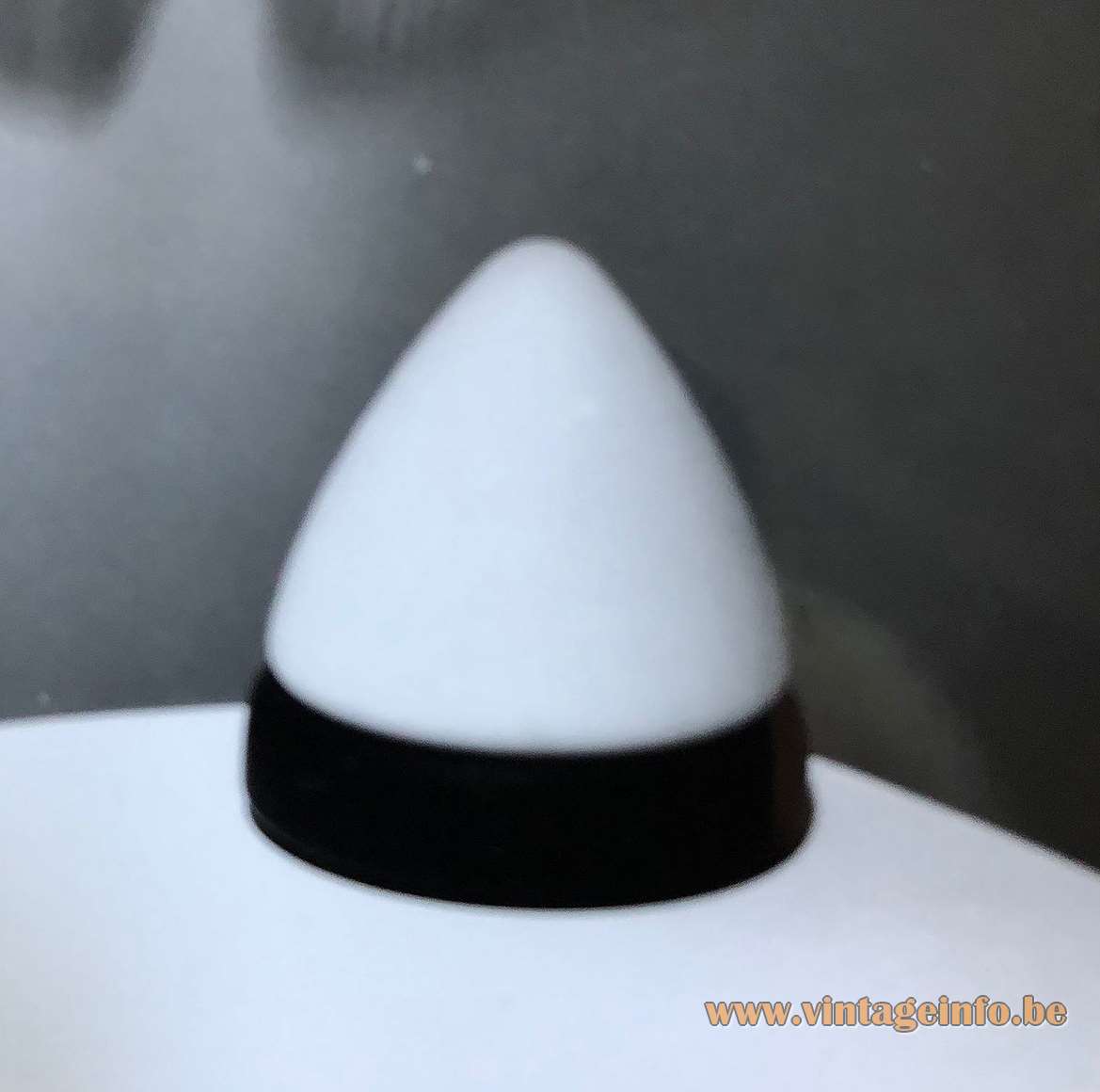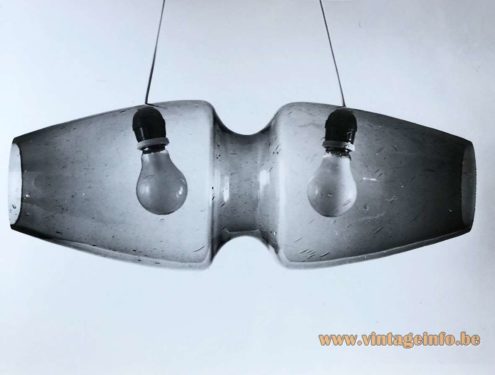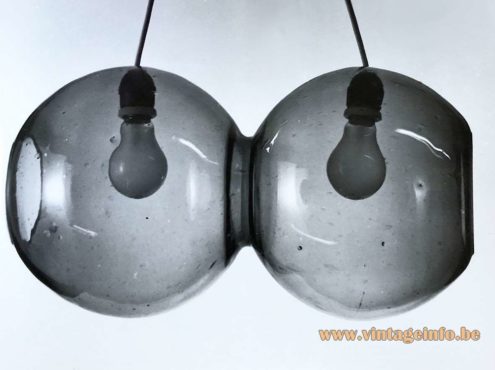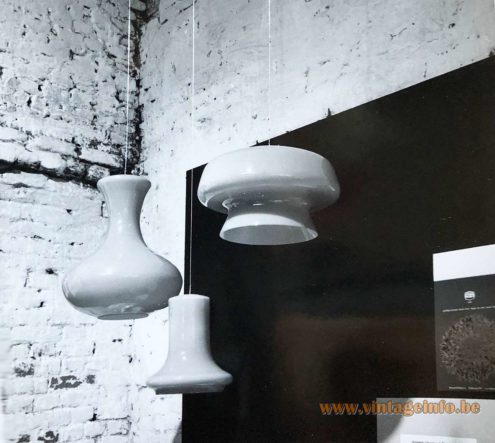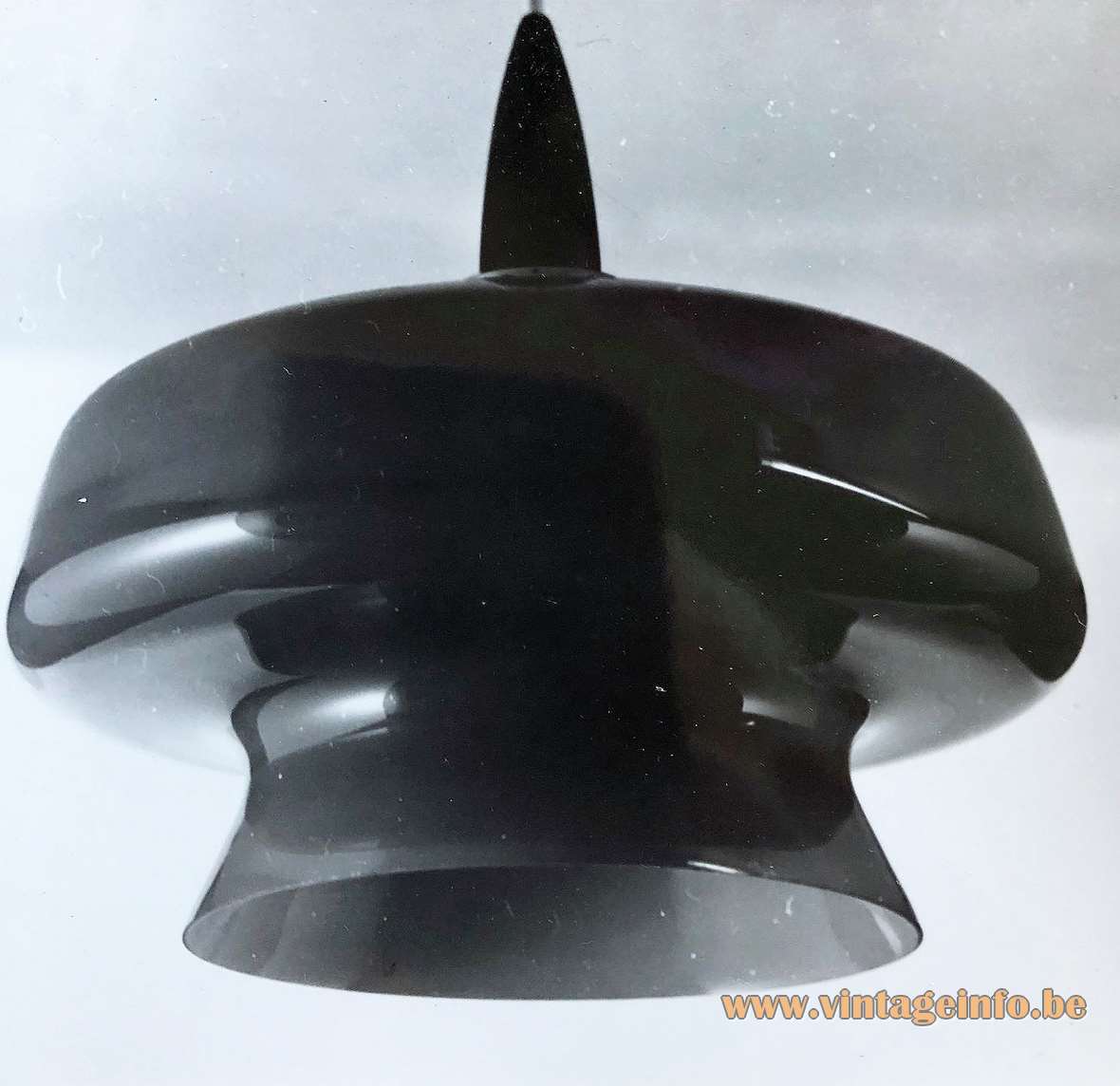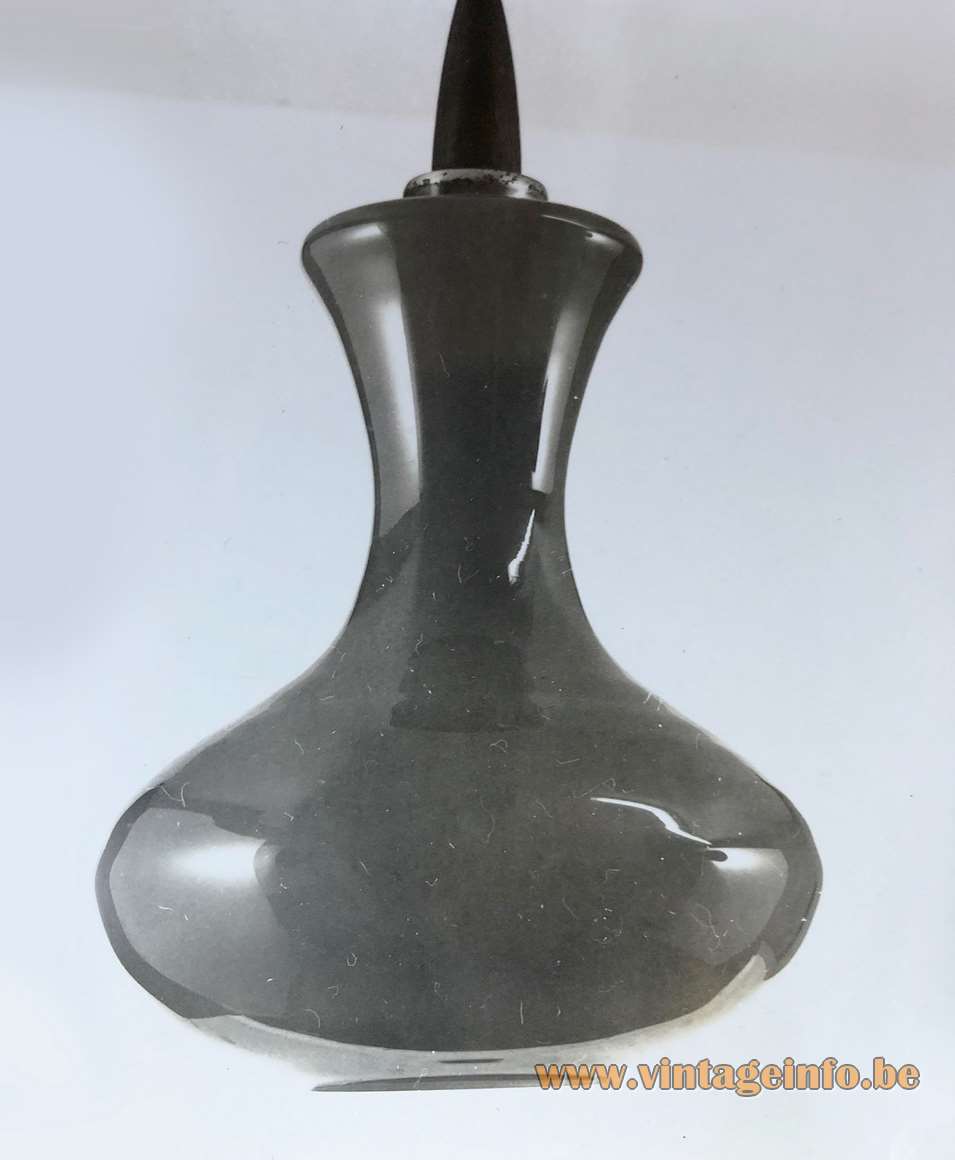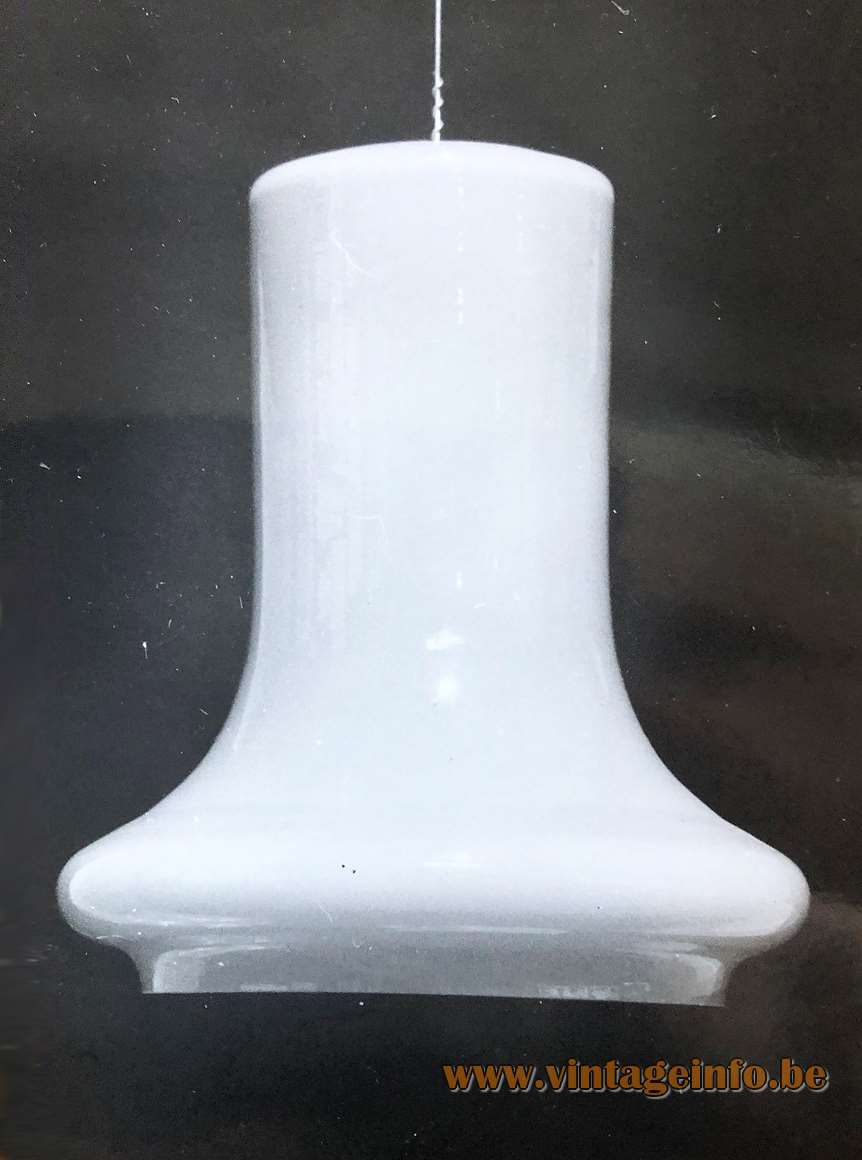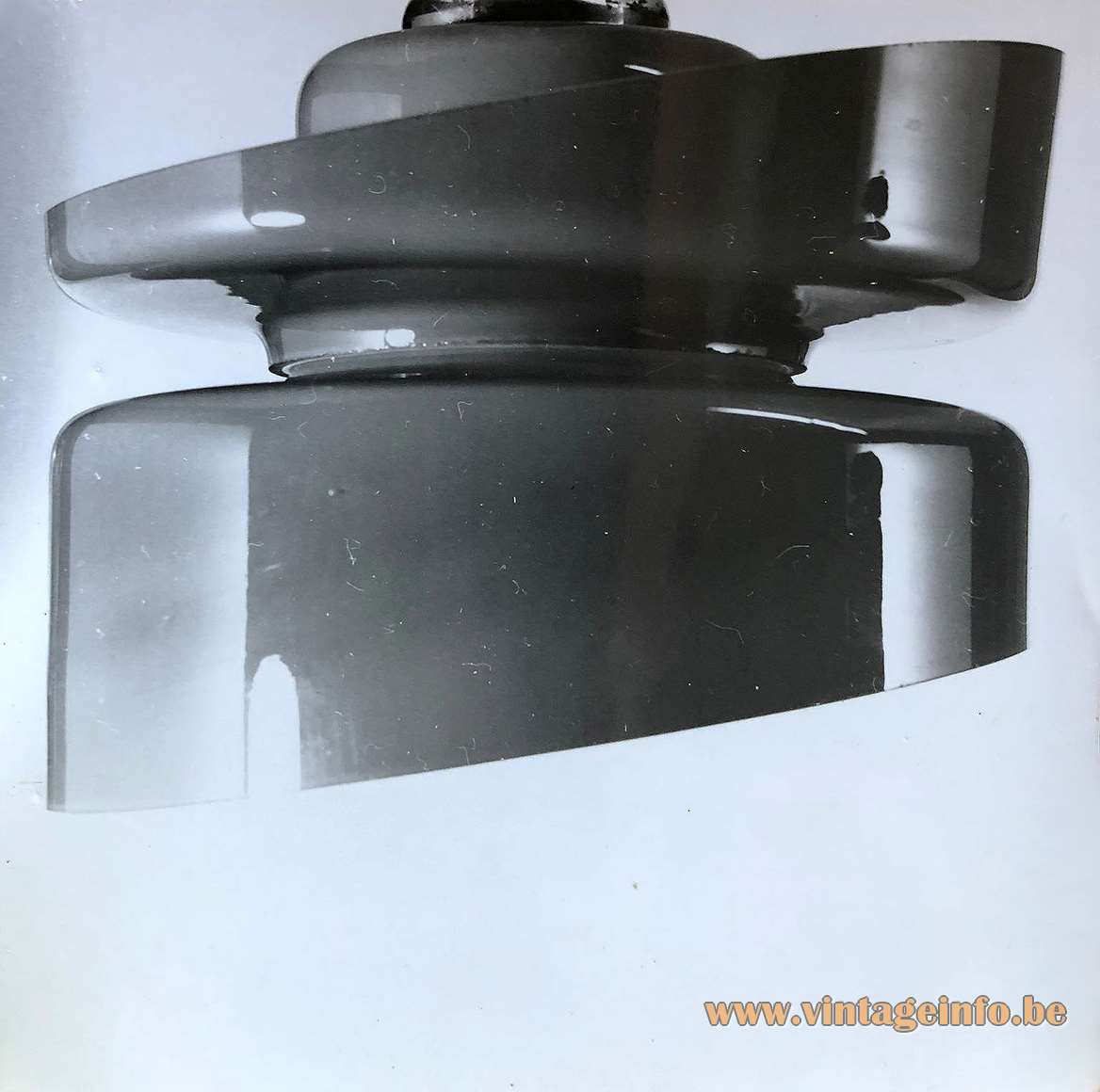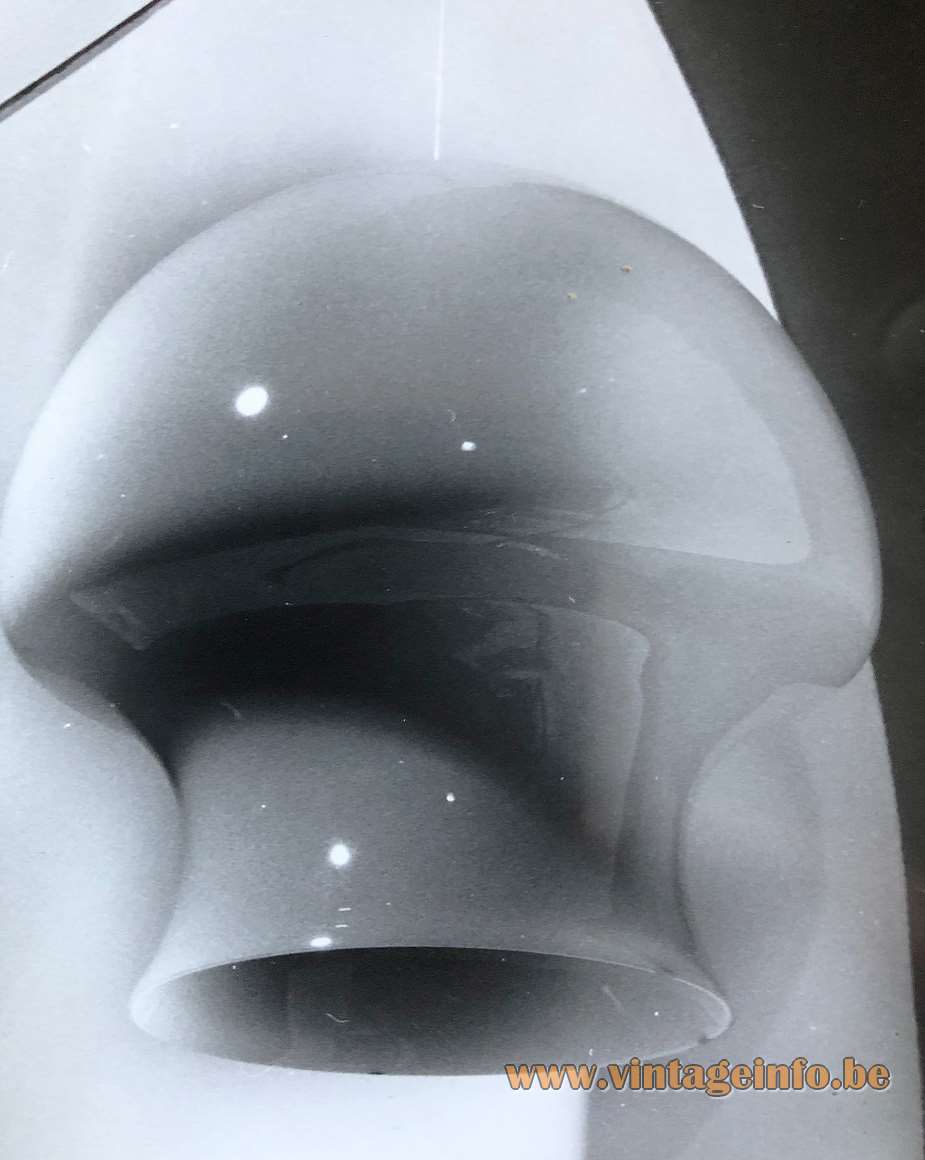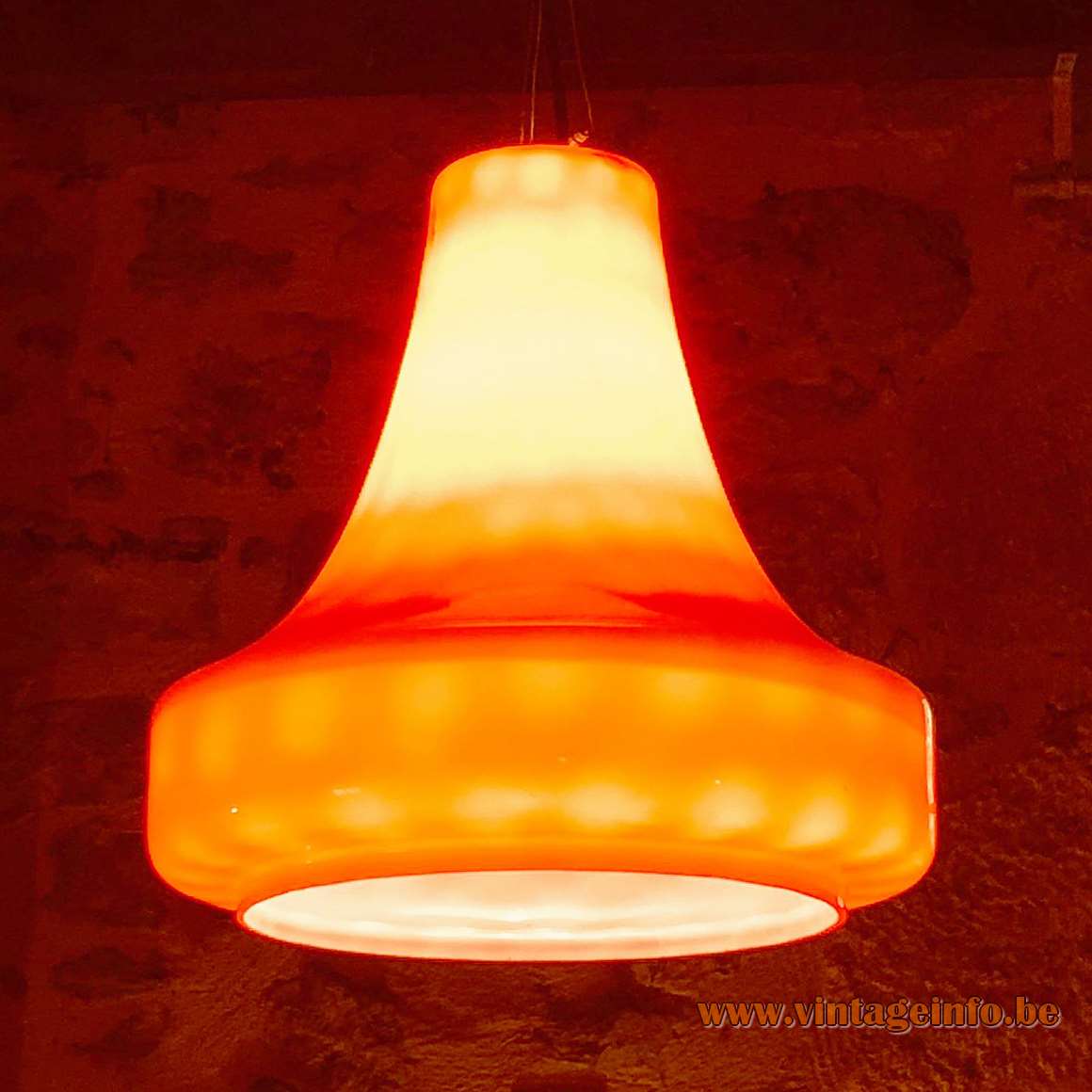Designers: Herwig and Frank Sterckx
Herwig and Frank Sterckx
Herwig and Frank Sterckx are graphic designers from Antwerp, Belgium. The twin brothers studied at the Koninklijke Academie voor Schone Kunsten van Antwerpen (Royal Academy of Fine Arts).
Their dad, Piet Sterckx was a journalist and he wrote an article for a newspaper about the Spanish glass blowers that worked in the glass factory in Boom, “N.V. Glasfabriek De Rupel ” (Limited Liability Company Glass Factory De Rupel), named after the river that runs along the city.
The director of the glass factory asked him if he knew someone who could make modern designs. He first asked his sons that then studied at the academy in Antwerp. In the period 1968 – 1969, the duo designed a whole series of lamps for De Rupel. Al the lamps were hand blown in steel molds. The test pieces were first blown into wooden molds.
Herwig and Frank Sterckx, students at that time, never heard anything about production and were never paid for their work. The director died suddenly and the successor claimed not to believe in the modern direction.
Echo
In addition to designing, the twins also had a modest career on television, but with a major impact. At that time there was only 1 TV station, named the BRT, (Belgian Radio and TV) so everyone watched it.
They were a gimmick in the Echo show: the two guys with a ladder (De ladderdragers). Herwig and Frank Sterckx always just walked by and no further attention was paid to them. The program makers never gave any explanation, so the duo naturally started to intrigue.
Below a fragment of the duo, recorded in Wetteren on March 14, 1969. The ladder of the two weird guys caught fire on the market and the fire brigade had to rush out…
Echo was a Flemish human interest program that was broadcast every week from 1961 to 1973. Around 8,400 mini-reports were made. The program was often awarded.
Glasfabriek De Rupel
The glass factory was founded in 1923.De Rupel was led by Léon Boon, one of the 30 investors. Léon Boon was a butcher and due to back problems he was appointed chairman of the management board. The company produced many glass items. Chandeliers and parts for lamps were produced since the 1930s.
De Rupel was a glass producer, they did not commercialize the lighting themselves. The lamps were offered at trade fairs to lighting companies who added the wiring and included them in their sales range. They produced glass for companies such as Massive, Philips and Bo-Niko. Many lamps on Vintageinfo uses glass from De Rupel. Some examples can be found in the links.
The glassworks went bankrupt in 1975 after it merges with 3 other Belgian glass companies: Doyen, Boussu and Verreries Nouvelles de Manage (New Glassworks of Manage). The fusion was without success. Glass production in Belgium became to expensive. De Rupel was the only factory that made a slight profit. The joint name was MANUVERBEL (Manu facture Bel ge du Ver re – Belgian Glass Factory).
The company was sold by the Belgian government to the German company BEGA Gantenbrink-Leuchten, also owner of Glashütte Limburg and dismantled. The government wanted to recoup the overdue social security contributions.
Today the BOOM company produces outdoor lighting and is located in Puurs, Belgium. It is named BOOM Buitenverlichting NV (BOOM Outdoor Lighting Limited Liability Company).
Glashütte Limburg also produced some lamps designed by Herwig and Frank.
Personal collection
These lamps (in colour) were collected over the years by Herwig Sterckx, who by accidentally found them on garage and jumble sales. He was not aware that they ever went in production. All these lamps are hanging in his collection now.
Many thanks to Herwig Sterckx and Fons Vandervaeren for the enlightening information. Fons his grandfather Alfred Moens was one of the founders of De Rupel glass factory. You can find his website about De Rupel glass over here. Many thanks Saskia for the photo of a rise & fall pendant lamp.
Designers: Herwig and Frank Sterckx – Expo 1970 Photos
These glass table and pendant lamps (in black and white) were all prototypes, not every light went in production. It is only a small part of their designs. The photos were taken at the exhibition.
Table Lamps
Pendant lamps
The pendant lamp below is a sample copy. The wooden mold already started burning.The surface is bumpy.Herwig has purchased this lamp in the Kloosterstraat in Antwerp, around 2005.
Links (external links open in a new window)
Echo – TV show on Wikipedia (in Dutch)
Boom glass – historical website (in Dutch)
Massive – Wikipedia (in Dutch)
Royal Academy of Fine Arts – Wikipedia
Glashütte Limburg table lamp 6036 on the iF Design Awards website
Vintageinfo, lamps by the Sterckx brothers
Lamps with De Rupel Glass
Bo-Niko white Bakelite wall lamp


